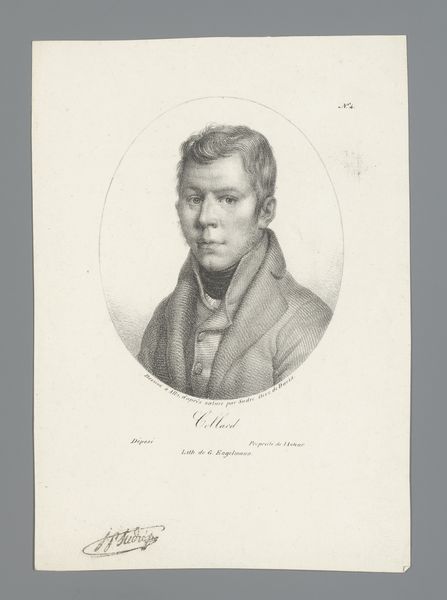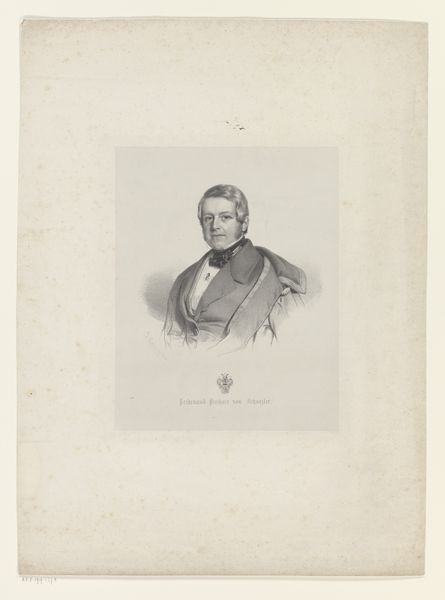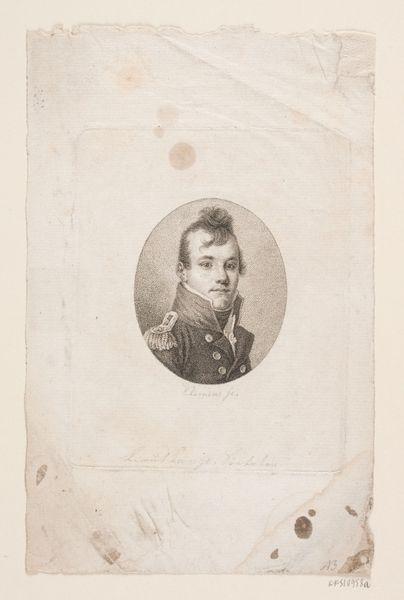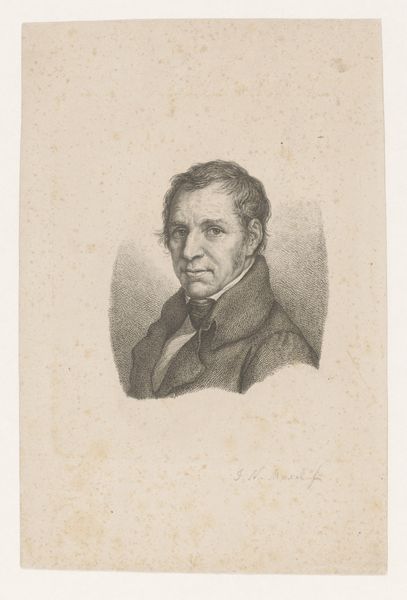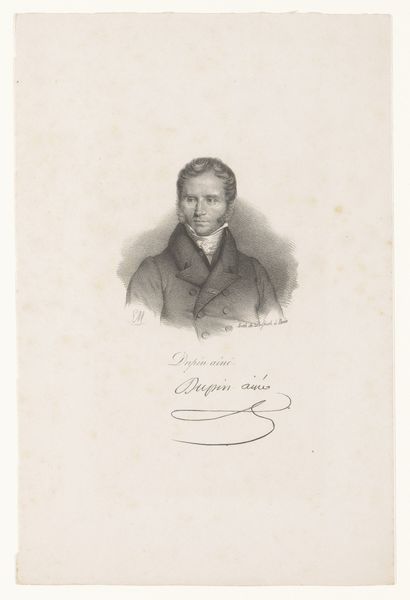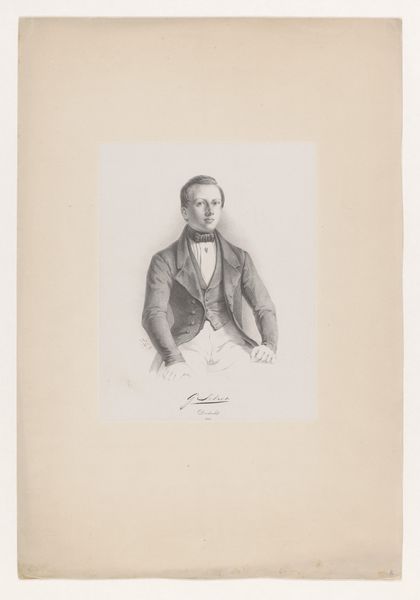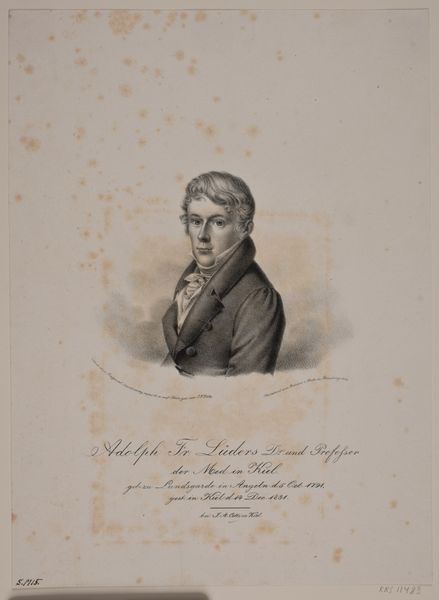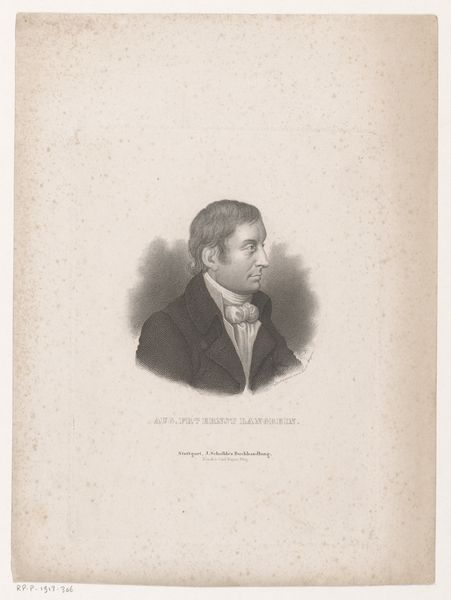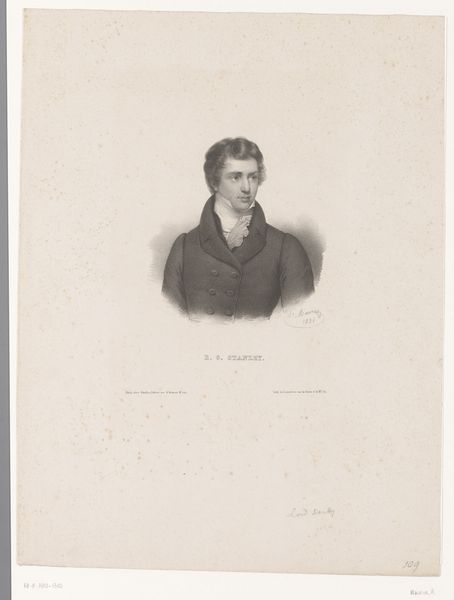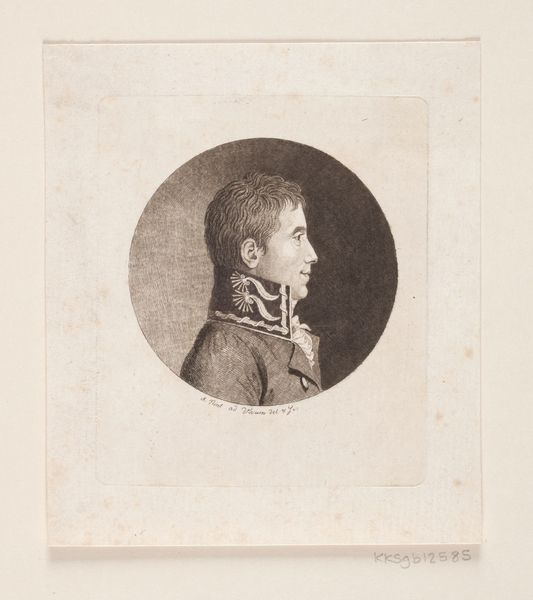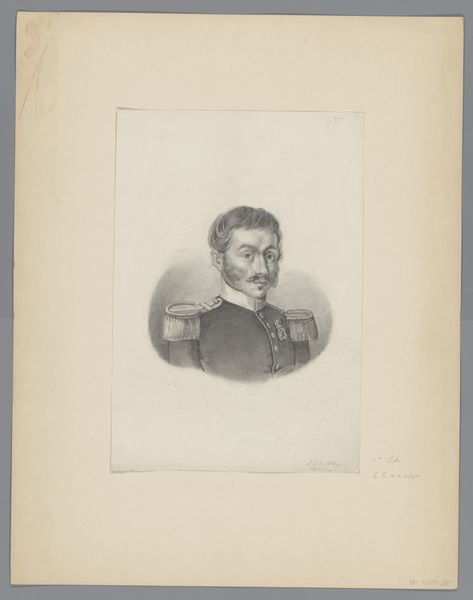
drawing, pencil
#
portrait
#
drawing
#
neoclacissism
#
pencil
#
academic-art
Dimensions: height 255 mm, width 179 mm
Copyright: Rijks Museum: Open Domain
Editor: Here we have Jean Pierre Sudre's "Portrait of François Bach," created in 1818. It's a pencil drawing, quite small and neatly rendered, encased in this perfect oval. I’m curious, what strikes you most about this work? Curator: The rigid structure and its embrace of Neoclassicism as academic art. The crisp, clean lines, the formal pose of the subject; these elements were all heavily influenced by the political and social shifts following the French Revolution. Think about it, how do you interpret the choice to depict a man of supposed artistic or intellectual merit in this very structured, almost regimented way? Editor: I hadn’t really connected it, but the clean lines, it feels very deliberate, I see what you mean! It's like order being imposed. Do you see a reflection of this regiment in Bach’s expression or in the details of his clothing? Curator: Precisely! Consider how portraiture at this time often served as a statement of social status or aspiration. Bach's demeanor, though reserved, seems to convey a certain...professionalism, mirroring the rising middle class's emphasis on education and respectability. This drawing's public function would certainly serve to establish those values, especially since portraits could circulate widely through engravings. Editor: So the art becomes like, a message, something for public consumption in a very deliberate way? Curator: Absolutely. Visual communication shaping social perception was a deliberate act. What about the placement of the work within the museum context now – do you think that shifts the reading of the piece? Editor: Definitely, removed from its original time, it’s a snapshot into a different cultural time. It’s really interesting to consider its cultural weight! Curator: Indeed, the layering of historical context, coupled with its aesthetic choices and later public displays shapes our interpretation. Editor: This gives me so much to think about regarding other portraits I’ve seen. Thanks for the fresh eyes!
Comments
No comments
Be the first to comment and join the conversation on the ultimate creative platform.
